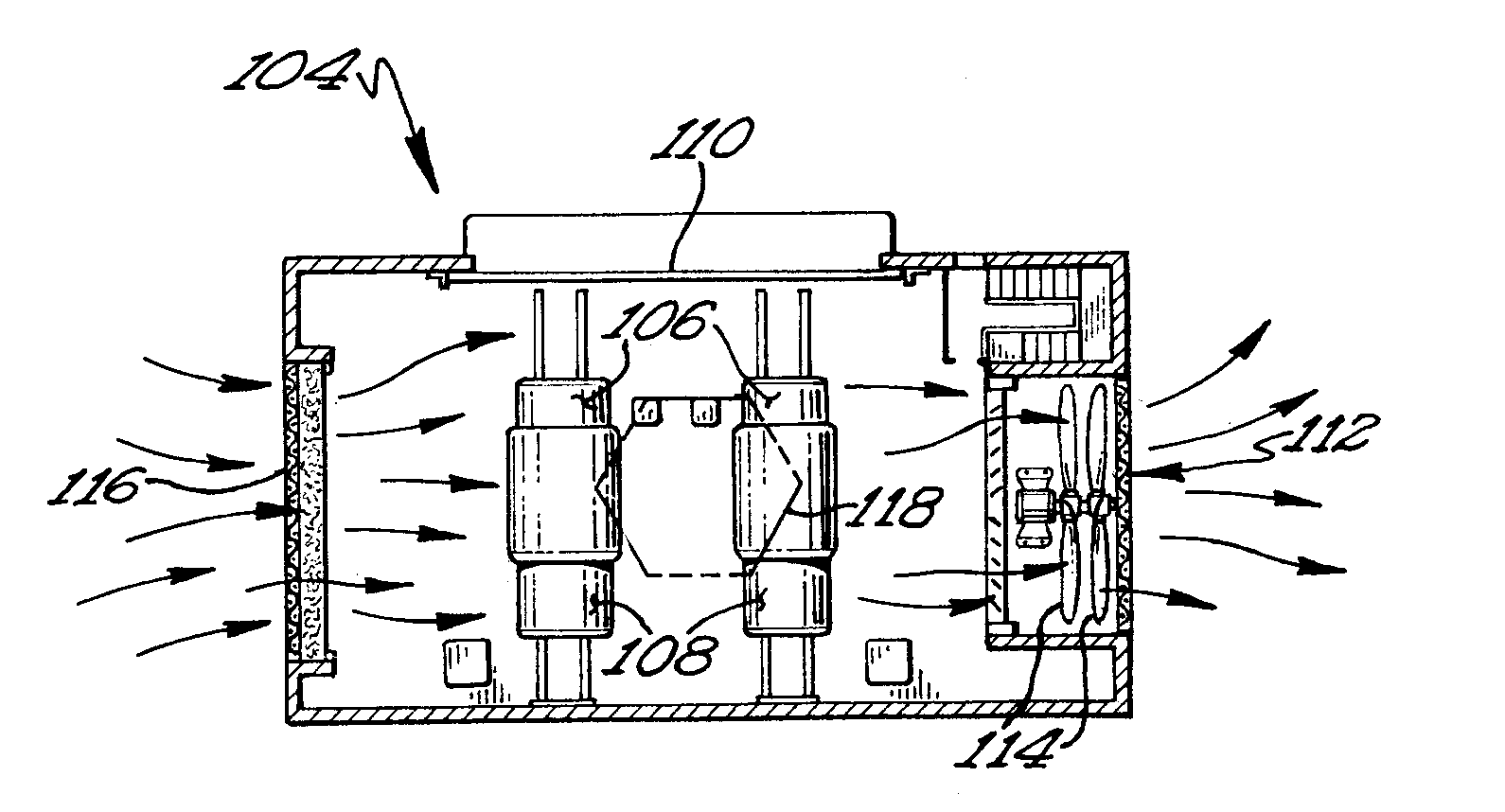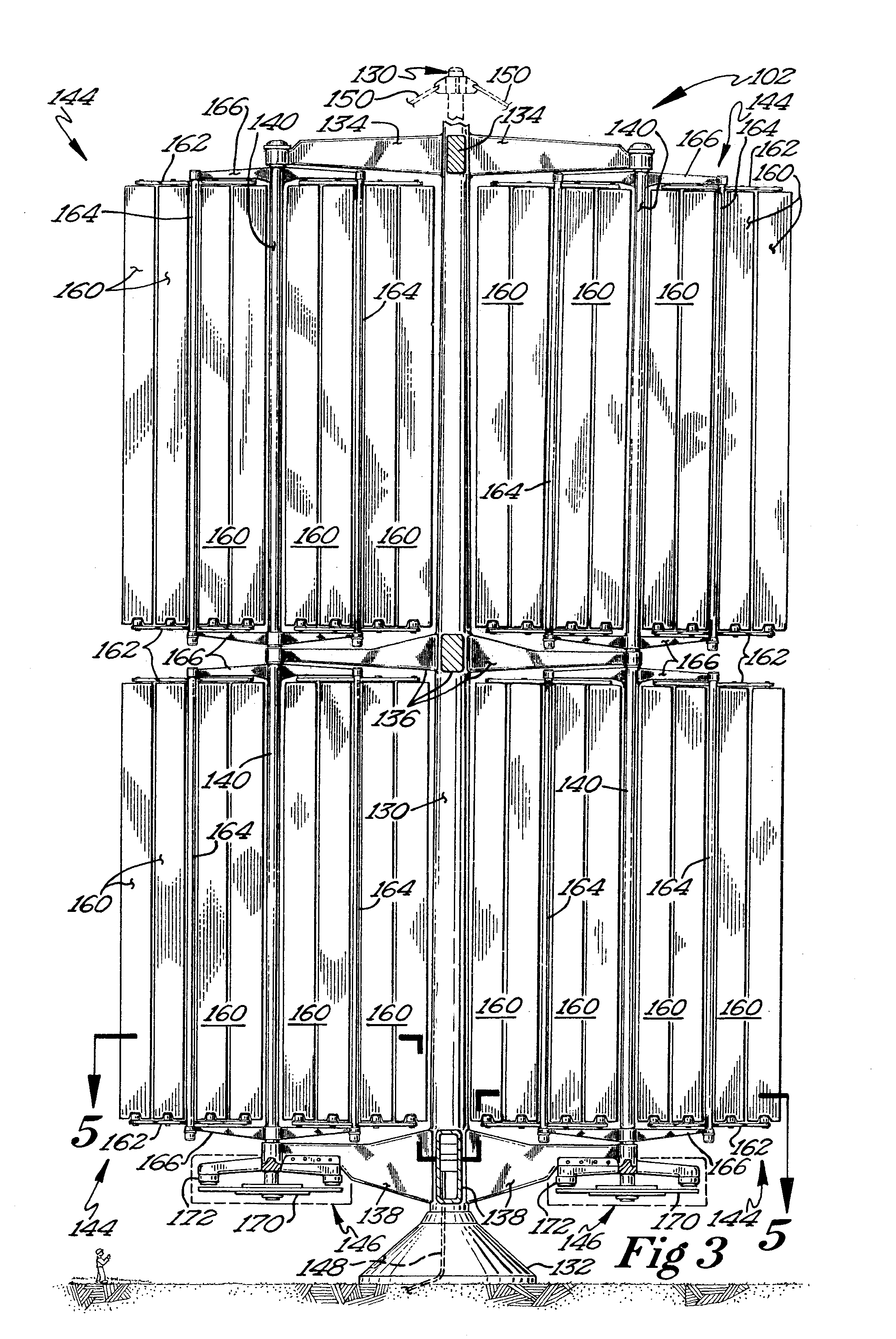Vertical axis wind turbine
a wind turbine and vertical axis technology, applied in vessel construction, renewable energy generation, greenhouse gas reduction, etc., can solve the problems of low power generation, limited power generation, and suffer from certain drawbacks, so as to reduce the need for maintenance and replacement parts, the effect of less susceptible to flexion and extension
- Summary
- Abstract
- Description
- Claims
- Application Information
AI Technical Summary
Benefits of technology
Problems solved by technology
Method used
Image
Examples
Embodiment Construction
[0020] According to various example embodiments, a vertical axis sail-type wind turbine includes an array of sail-like structures that are mounted on rotating sail masts. When the sail-like structures are moving in a downwind direction, they are oriented to present a flat surface that is perpendicular to the wind direction. When the sail-like structures are moving in an upwind direction, they are oriented to present a surface that is at an angle that creates an upwind vector. The sail-like structures rotate about the sail masts, which are mounted to transverse mounting arms that are firmly mounted to a main mast. The main mast transfers power through a gear and shaft drive to hydraulic pumps in the tower. This hydraulic fluid pressure is then used to drive an electrical generator. The use of a hydraulic power transfer eliminates the transmission and planetary gear system that are characteristic of many conventional wind turbines.
[0021] In the following description, numerous specifi...
PUM
 Login to View More
Login to View More Abstract
Description
Claims
Application Information
 Login to View More
Login to View More - R&D
- Intellectual Property
- Life Sciences
- Materials
- Tech Scout
- Unparalleled Data Quality
- Higher Quality Content
- 60% Fewer Hallucinations
Browse by: Latest US Patents, China's latest patents, Technical Efficacy Thesaurus, Application Domain, Technology Topic, Popular Technical Reports.
© 2025 PatSnap. All rights reserved.Legal|Privacy policy|Modern Slavery Act Transparency Statement|Sitemap|About US| Contact US: help@patsnap.com



